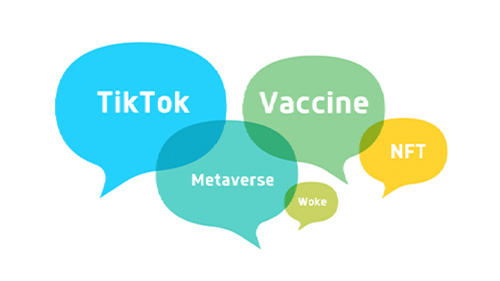Rhetorical Analysis: Letter from a Birmingham Jail
This resource will introduce students to each element of the rhetorical situation as it relates to a complex text, “Letter from a Birmingham Jail” by...
AP & Honors Mathematics
Explore Wiley titles to support both AP and Honors mathematics instruction.
Literacy Skills & Intensive Reading
Connections: Reading – Grades 6–12
Empower student success with a proven intensive reading program that develops strong reading skills in striving readers.
Drama, Speech & Debate
Basic Drama Projects 10th Edition
Build students’ confidence and competence with comprehensive, project-based theatre instruction.
Literature
Connections: Literature
Support learners as they study dynamic, relevant texts and bring the richness of diverse voices to students through literature.
Literature & Thought
Develop critical thinking, reading, and writing across literacy themes, genres, historical eras, and current events.
Language Arts
Vocabu-Lit® – Grades 6–12
Help students build word power using high-quality contemporary and classic literature, nonfiction, essays, and more.
Connections: Writing & Language
Help students develop grammar, usage, mechanics, vocabulary, spelling, and writing and editing skills.
Reading/English Language Arts
Measuring Up to the English Language Arts Standards
Incorporate standards-driven teaching strategies to complement your ELA curriculum.
English Language Learners
Measuring Up for English Language Learners
Incorporate research-based best practices for ELLs with an approach that includes a focus on language acquisition strategies.
Mathematics
Measuring Up to the Mathematics Standards
Incorporate standards-driven teaching strategies to complement your mathematics curriculum.
Foundations
Measuring Up Foundations
Help students master foundational math skills that are critical for students to find academic success.
Science
Measuring Up to the Next Generation Science Standards
Give students comprehensive NGSS coverage while targeting instruction and providing rigorous standards practice.
Assessment
Measuring Up Live
Deliver innovative assessment and practice technology designed to offer data-driven instructional support.
For a better website experience, please confirm you are in:
6 min read
 Dr. Brandon Abdon
Nov 19, 2025 10:33:59 AM
Dr. Brandon Abdon
Nov 19, 2025 10:33:59 AM

Rhetoric really is everything, everywhere, and all at once since every act of communication is spinning in a multiverse of contexts that all shape what’s said, how it’s said, and why it matters. Yet within that vast swirl of influences, not every force operates on the same level. The rhetorical situation captures the immediate moment of communication—a writer responding to an exigence for a particular audience—whereas context refers to the broader historical, cultural, and ideological conditions that surround and shape that ac. The world that shapes and is shaped by the situation.
Because of these complexities, one of the most common—and most important—distinctions AP English Language students need to grasp is the difference between a rhetorical situation and the broader context that surrounds it. Teachers often introduce these concepts early in the year, but the two terms are easy to conflate because they seem to describe overlapping territory. Both deal with circumstances surrounding a text, but they do so at different levels of scope and focus. Understanding that distinction helps students see writing not as a static product, but as an act of communication both shaped by and shaping the world around it.
In its simplest form, the rhetorical situation refers to the particular instance in which rhetoric happens: a writer or speaker communicating a message to an audience with a specific purpose in mind. In the AP English Language course, this is what students analyze when they respond to the rhetorical analysis essay: the interplay between the writer, the audience, the message, and the purpose.
Lloyd Bitzer, whose 1968 essay “The Rhetorical Situation” is foundational to our current understanding of rhetoric, defined a rhetorical situation as “a complex of persons, events, objects, and relations presenting an actual or potential exigence which can be completely or partially removed if discourse can so constrain human decision or action.” In simpler terms, Bitzer argues that rhetorical acts are responses to pressing circumstances. A writer sees a problem, a need, or an opportunity for persuasion, and responds through language.
In AP terms, this is where students identify the exigence (the reason the writer is motivated to write now), the audience (the people who can act or respond to the message), and the purpose (what the writer hopes to achieve). The rhetorical situation is thus an immediate and specific event: a speech delivered, an essay published, a letter sent, a post made.
For example, consider Martin Luther King Jr.’s “Letter from Birmingham Jail.” The situation includes King’s imprisonment in 1963, the open letter written by eight white clergymen that criticized his protest actions, and King’s decision to respond directly to those clergymen through a letter. The exigence is the criticism; the audience is the clergy (and, by extension, the American public); and the purpose is to justify direct action and expose the moral urgency of the Civil Rights Movement. All of this defines the rhetorical situation—the immediate moment of rhetorical exchange.
If the rhetorical situation is the specific event, the context refers to the world in which that event occurs. It encompasses the historical, cultural, social, political, and intellectual conditions that make the rhetorical situation possible—and meaningful. Context stretches outward in all directions: before, around, and after the text.
Returning to King’s “Letter,” the broader context includes centuries of racial oppression, the legal structures of segregation, the history of nonviolent protest, and the moral discourse of Christian theology and American democracy. These are not part of the immediate situation—they are not the letter or the clergymen themselves—but they inform everything about how King writes, what appeals he uses, and how his audience might respond. Without that broader context, we might analyze the diction and syntax of the “Letter,” but we would miss the deeper significance of its moral reasoning and its appeal to justice.
In this way, every rhetorical situation responds to its context. Writers draw on the language, values, and debates of their times. Even the most personal essays or creative works are influenced by prevailing norms of genre, style, and discourse. Context is the oxygen of rhetoric—it’s the atmosphere that surrounds every rhetorical act, giving it life and meaning.
Students often treat “context” and “situation” as synonyms, but distinguishing them clarifies both analytical focus and interpretive depth.
In the AP rhetorical analysis essay, this distinction helps students move from merely describing what a writer does (“King’s repetition of the phrase ‘now is the time’ emphasize his call for immediate action”) to explaining why those choices matter in light of broader conditions (“King’s repetition of ‘we’ appeals to the collective moral conscience of the clergy and of Americans who value unity and justice, reflecting the tension between Christian brotherhood and racial segregation in 1960s America”).
When students begin to see how every rhetorical situation is nested within a larger context (and even multiple contexts), they get closer to developing more sophisticated analyses—ones that interpret rhetorical choices as strategic responses to the world, not just stylistic flourishes.
It’s helpful to visualize situation and context as concentric circles. The rhetorical situation is the inner circle—the event of communication itself. The outer circle is the context—everything surrounding and influencing that event. But the relationship between the two isn’t one-directional. Just as context shapes a situation, rhetorical situations also shape context.
A strong rhetorical act can change the conversation, shift public attitudes, or redefine cultural values. King’s “Letter” didn’t just emerge from the context of racial injustice—it also transformed that context by reshaping how Americans understood justice, protest, and moral duty.
Similarly, Rachel Carson’s Silent Spring was written within the context of growing environmental concern and postwar industrial expansion, but it also altered that context by inspiring the environmental movement and influencing government regulation. Each rhetorical situation both responds to and helps redefine the context that gave rise to it.
This is what makes rhetoric powerful—and what makes rhetorical analysis more than an exercise in labeling techniques. When students recognize that a text is part of an ongoing conversation with the world, they can analyze not only how it reflects its time but also how it acts upon it.
Another useful insight for AP students is that context is never singular or static. It’s layered, and it evolves over time. A rhetorical act can be situated within multiple overlapping contexts—historical, political, cultural, personal, or even technological.
Take, for instance, Greta Thunberg’s 2019 speech at the United Nations Climate Action Summit. The immediate situation includes Thunberg addressing world leaders about the urgency of climate change. The context is multifaceted: global scientific consensus on climate change, generational tensions about responsibility, media discourse on youth activism, and the legacy of previous environmental movements.
As time passes, the interpretive context of that speech also changes. Future audiences may read it through the lens of what eventually happened in environmental policy or through cultural shifts that redefine how we understand activism. Thus, context is not only the background against which rhetoric happens—it is the ongoing conversation that rhetoric continually reshapes.
Helping students internalize the distinction between situation and context can start with a few simple strategies that can easily build toward more complex tasks:
Learning to better distinguish between situation and context will help students better understand a fundamental truth about writing: it never happens in a vacuum (shout out to my professor and mentor, Dr. Cheryl Glenn). Every text is a response to something—an event, an argument, a tension, an idea—and it always takes shape within a world of beliefs, constraints, and opportunities.
To analyze rhetoric well, students must understand not only what a writer is doing in the moment, but also what larger conversation that writer is entering or reshaping. When they grasp that every rhetorical situation is embedded within—and responsive to—its broader context, they begin to see rhetoric as a living, dynamic force: an act of participation in the world’s ongoing dialogue.
Advanced Placement®, AP®, and College Board® are trademarks registered and/or owned by the College Board, which is not affiliated with, and does not endorse, these products.

This resource will introduce students to each element of the rhetorical situation as it relates to a complex text, “Letter from a Birmingham Jail” by...

It's almost the end of the school year! With the exam behind you and your students, take a moment in class to reflect on this past year (while giving...

Guide students through an engaging activity that stresses the importance of the thesis & topic sentences to structure the line of reasoning. Students...

While we want argument and rhetoric to develop logically and follow a line of reasoning, we also must recognize that sometimes what others see as...

Join Brandon Abdon, Timm Freitas, and Beth Hall as they celebrate their new book–AMSCO's Writing for the AP Exam: English Language and Composition....

Every May, AP readers hear the same refrain: “The sophistication point is a unicorn.” But that’s not quite right. Unicorns don’t exist. The...

The concept of a "Line of Reasoning" is not unfamiliar to students, but the terminology and various approaches to developing a line of reasoning may...

Most AP English teachers now find themselves well into this critical second half of the school year. With the AP exam quickly approaching in May (I...

With an emphasis on close reading, analysis, and full-length essays, losing track of sentences is easy. Join Dr. Brandon Abdon, author of our AP®...

Join Dr. Brandon Abdon and Timm Freitas from The Garden of English to discuss templated essay writing strategies.

Most AP English teachers recognize that the multiple-choice questions assess skills and essential knowledge in composition and reading, but students...

While the 2023 AP English Language and Composition exam represents year 4 of assessment using the analytic scoring guide and year 3 of the changes to...
